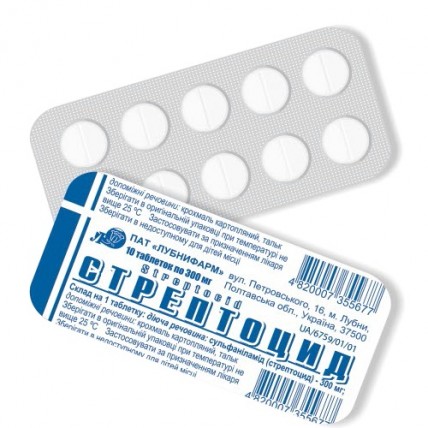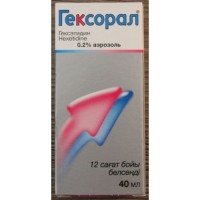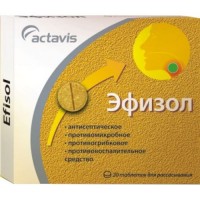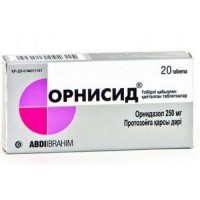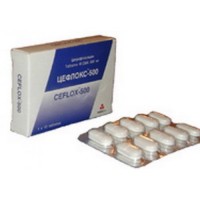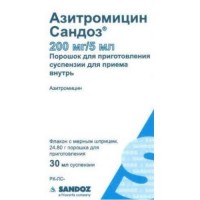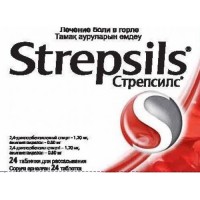Streptocide 300 mg (10 tablets)
- $3.50
Out Of Stock
The instruction for medical use of STREPTOCIDE medicine the Trade name Streptocide the International unlicensed name Streptocide Dosage Form of the Tablet of 300 mg Structure 1 tablet contains active agent: streptocide (streptocide) of 300 mg excipients: potato starch, talc. The description of the Tablet of white or almost white color, in the form of integral correct, round cylinders, upper and lower surfaces of which flat, edges of surfaces are slanted, from risky for division on one party. Pharmacotherapeutic group Antimicrobial drugs for system use. Antibacterial drugs for system use. Streptocides and trimeto uses Streptocides of short action. Streptocide. ATX J01E B06 code. The pharmacological Pharmacokinetics At properties use inside it is quickly soaked up – concentration of streptocide in blood is maximum it is observed in 1-2 hours (within 4 hours it is designated in cerebrospinal fluid), decrease in the maximum concentration in blood for 50% happens less than in 8 hours. Passes through gistogematichesky, including hematoencephalic (GEB), placentary barriers. It is distributed on fabrics, in 4 h it is found in medullispinal liquid. In a liver it is acetylated with loss of antibacterial properties. About 95% of drug are removed by kidneys. The pharmacodynamics Streptocide breaks education in microorganisms of so-called rostkovy factors – folic, degidrofoliyevy acids, other connections having paraaminobenzoic acid (PABK) in the molecule. As a result of proximity of structures of PABK and Streptocide, streptocide as the competitive antagonist of acid joins in a metabolic chain of microorganisms and breaks in it exchange processes that results in bacteriostatic effect. Streptocide – streptocide of short action, has bacteriostatic effect in relation to streptococci, meningokokka, pneumococci, gonokokka, colibacillus, causative agents of toxoplasmosis and malaria. Does not influence anaerobic microorganisms. - erysipelatous inflammation - a tonsillitis - a wound fever the Route of administration and doses to Accept indications inside in time or after reception of food, washing down 150-200 ml of water. The single dose for adults and children aged from 12 years makes 600 mg-1.2 g, a daily dose – 3-6 g. The daily dose is divided into 5 receptions. The maximum doses for adults: single – 2 g, daily – 7 g. A single dose to children aged from 6 up to 12 years – 300-600 mg. The frequency rate of reception for children is 4-6 times a day. The maximum daily dose for children – 0.9-2.4 g. Before appointment the patient of drug needs to define sensitivity to it of the microflora which caused a disease in this patient. Duration of treatment the doctor individually, depending on weight and a course of the disease defines, localizations of process, efficiency of therapy. Side effects from the system of blood and lymphatic system: a leukopenia, an agranulocytosis, aplastic anemia, thrombocytopenia, a prothrombinopenia, an eosinophilia, hemolytic anemia at deficit glyukozo-6-fosfatdegidrogenazy. From a cardiovascular system: tachycardia, myocarditis. From nervous system: a headache, neurologic reactions, including aseptic meningitis, an ataxy, insignificant intracranial hypotension, spasms, dizziness, drowsiness/insomnia, feeling of fatigue, a depression, peripheral or optical neuropathy, a disorder of vision, psychosis, depression, paresthesias. From a respiratory system: pulmonary infiltrates, fibroziruyushchy alveolitis. From a digestive tract: thirst, dryness in a mouth, the dispepsichesky phenomena, nausea, vomiting, diarrhea, anorexia, pancreatitis, pseudomembranous colitis. From a gepatobiliarny system: increase in activity of liver enzymes (ALT, nuclear heating plant, alkaline phosphatase), cholestatic hepatitis, gepatonekroz, hepatomegalia, jaundice, cholestasia. From an urinary system: urine discoloration (saturated yellowy-brown color), a crystalluria at acid reaction of urine, are possible nephrotoxic reactions: interstitial nephrite, tubular necrosis, a renal failure, a hamaturia, a shock kidney with an anury. From skin and hypodermic cellulose: dermahemia, skin rash (including erythematic and squamous, papular), itching, urticaria, allergic dermatitis, photosensitization, exfoliative dermatitis, nodular erythema, cyanosis. Allergic reactions: toxic epidermal necrolysis (Lyell's disease), Stephens-Johnson's syndrome, system lupus erythematosus, serumal syndrome, anaphylactic reactions, Quincke's edema, cold. General disturbances: medicamentous fever, pain in right hypochondrium and a waist. Other: the complicated breath, a nodular periarteritis, a hypothyroidism, a hypoglycemia. In isolated cases the development of a hypothyroidism is possible. Contraindications - Individual sensitivity to streptocides, sulphone or to other components of drug, - existence in the anamnesis of the significant toksiko-allergic reactions to streptocides, - oppression of a marrowy krovoobrazovaniye, - dekompensirovanny heart failure, - diseases of the haematogenic system, - anemia, - a leukopenia, - a bazedovy disease, - diseases of kidneys and a liver (nefroza, nephrites, a liver failure, a heavy renal failure, acute hepatitises), - a hyperthyroidism, - congenital deficit glyukozo-6-fosfatdegidrogenazy, - an azotemia, - a porphyria, - to children up to 6 years, - to women during the periods of a lactation and pregnancy. Medicinal interactions At simultaneous use: – with the non-steroidal anti-inflammatory drugs derivative of sulphonylurea, antitrombotichesky means, antagonists of vitamin K – effect of these drugs amplifies, – with folic acid, bactericidal antibiotics (including penicillin, cephalosporins) – the efficiency of streptocides decreases, – with bactericidal antibiotics, oral contraceptives – effect of these drugs decreases, – with PASK and barbiturates – the activity of streptocides amplifies, – with erythromycin, lincomycin, tetracycline – the antibacterial activity mutually amplifies, the spectrum of action extends, – with rifampicin, streptomycin, Monomycinum, Kanamycinum, gentamycin, oxyquinoline derivatives (nitroxoline) – antibacterial effect of drugs does not change, – with Acidum nalidixicum (Nevigramonum) – the antagonism is sometimes observed, – with chloramphenicol, nitrofurans – the cooperative effect decreases, – with the drugs containing PABK ethers (novocaine, anaesthesin, a difireplace), – the antibacterial activity of streptocides is inactivated. Streptocides are not appointed along with hexamethylenetetramine (urotropin), with anti-diabetic drugs (sulphonylurea derivatives), with defininy, neodicoumarin and other indirect anticoagulants. Streptocide can enhance effect and/or toxicity of a methotrexate as a result of replacement it from communication with proteins and/or weakening of his metabolism. At simultaneous use with other drugs, causing oppression of marrow, hemolysis, hepatotoxic action, risk of development of toxic effects is possible. Simultaneous use with methenamin (urotropin) owing to increase in risk of development of a crystalluria at acid reaction of urine is not recommended. Phenylbutazone (Butadionum), salicylates and indometacin can force out streptocides from communication with proteins of blood plasma, thereby increasing their concentration in blood. At use together with p-aminosalicylic acid and barbiturates the activity of streptocides amplifies, with levomycetinum – risk of developing an agranulocytosis increases, with the drugs containing ethers of paraaminobenzoic acid (novocaine, anaesthesin, Dicainum) the antibacterial activity of streptocide is inactivated. Special instructions At drug treatment it is necessary to carry out systematic control of function of kidneys and indicators of peripheral blood, glucose level to blood. At long-term treatment it is necessary to carry out by drug periodically blood test (biochemical and general blood tests). Prescribing of drug in insufficient doses or premature phase-out of drug can promote increase in resistance of microorganisms to streptocides. Streptocides should not be applied to treatment of the infections caused by a beta and hemolytic streptococcus of group A as they do not lead to its eradikation and, as a result, such complications as rheumatism and a glomerulonephritis cannot warn. It is necessary to appoint drug with care the patient with chronic heart failure, diseases of a liver and in a renal failure. Patients should appoint streptocide with care with a severe form of allergic diseases or bronchial asthma, with diseases of a system of blood. At emergence of signs of hypersensitivity reaction, drug should be cancelled. In a renal failure the cumulation of streptocide and its metabolites in an organism is possible that it can lead to development of toxic effect. With care it is necessary to apply streptocides, in that number streptocide, sick diabetes as streptocides can influence sugar level in blood. High doses of streptocides have hypoglycemic action. As streptocides are bacteriostatic, but not bactericidal drugs, the full-fledged course of therapy in order to avoid a recurrence of an infection and to development of resistant forms of microorganisms is necessary. Considering similarity of chemical structure, people cannot apply streptocides from raised sensitivity to furosemide, thiazide diuretics, inhibitors of a karboangidraza and derivatives of sulphonylurea. Patients need to use enough liquid to avoid a crystalluria and development of an urolithiasis. At elderly patients the increased risk of development of heavy undesirable reactions from skin is defined, oppressions of a krovoobrazovaniye, a Werlhof's disease (the last – especially in combination with thiazide diuretics). It is necessary to avoid prescribing of drug to patients aged from 65 years in connection with the increased risk of emergence of heavy side reactions. It is recommended to avoid influence of direct sunshine and artificial ultra-violet radiation, considering a possibility of development of a photosensitization at use of streptocides. During treatment it is necessary to adhere to the dosing mode, to apply the recommended dose at an interval of the 24th hour, doing not miss administration of drug. In case of the admission of a dose not to double the following dose. If symptoms of a disease do not begin to disappear or on the contrary, the state of health will worsen, or there will be undesirable phenomena, it is necessary to suspend use of drug and to see behind consultation a doctor about a possibility of further use of drug. Children do not apply at children up to 6 years. Use during pregnancy or feeding by a breast during pregnancy or feeding by a breast drug is contraindicated. In case of need drug treatment it is necessary to stop feeding by a breast. The feature of influence of medicine on ability to run the vehicle or potentially dangerous mechanisms Before clarification of individual reaction to drug needs to refrain from control of motor transport or work with other mechanisms as during treatment by streptocides such side reactions from nervous system are possible as dizziness, spasms, an ataxy, drowsiness, a depression, psychoses. Overdose strengthening of manifestations of side effects is possible. At overdose the developing of anorexia (lack of appetite), nausea, vomitings, kolikoobrazny pain, a headache, drowsiness, dizziness, a faint is possible. At prolonged use the fever, a hamaturia, a crystalluria, cyanosis, tachycardia, paresthesias, diarrhea, a cholestasia, a renal failure with an anury, toxic hepatitis, a leukopenia, an agranulocytosis are possible. Treatment. In case of overdose it is recommended to see a doctor. Symptomatic treatment. Before rendering medical aid a stomach to wash 2% with solution of Natrii hydrocarbonas and to accept suspension of the coal activated or other enterosorbents. The use of a large amount of liquid, an artificial diuresis, a hemodialysis is shown. The form of release and packing On 10 tablets place in blister strip packaging from a film of polyvinylchloride and aluminum foil. Blister strip packagings together with iinstruktion on medical use in the state and Russian languages place in boxes of cardboard chrome ersatz waste or bandbox or in boxes from corrugated fibreboard. The number of instructions invests in group packing on number of packs. To Store storage conditions in original packing at a temperature not above 25 °C. To store out of children's reach. Period of storage of 5 years. Not to apply after an expiration date. Prescription status According to the prescription the Producer/packer of PJSC Lubnyfarm, Ukraine, 37500, the Poltava Region, Lubny, Barvinkov St., 16. Owner of the registration certificate of PJSC Lubnyfarm, Ukraine, 37500, Poltava Region, Lubny, Barvinkov St., 16. The name, the address and a contact information of the organization in the territory of the Republic of Kazakhstan, the accepting claim (offer) on quality of medicines from consumers and responsible for post-registration observation of safety of medicine: Pharmaline LLP, 050016, Almaty, Shamiyeva St., 11
to Develop
to Develop
